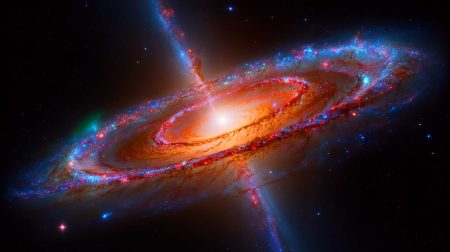| IN A NUTSHELL |
|
The SABRE South Collaboration has made significant strides in the quest to uncover the mysteries of dark matter. Recently, they published an executive summary of their Technical Design Report, outlining a comprehensive setup for their dark matter experiment. This groundbreaking project, hosted at the Stawell Underground Physics Laboratory in Victoria, Australia, aims to provide an independent confirmation of findings from the DAMA/LIBRA experiment in Italy. With its strategic location in the Southern Hemisphere, SABRE South hopes to eliminate any doubts related to seasonal or environmental effects, paving the way for a clearer understanding of dark matter.
High-Tech Dark Matter Detection
The DAMA/LIBRA experiment has long reported annual modulation signals that suggest the presence of dark matter, yet these results remain controversial due to the lack of corroboration from other detectors. The SABRE South experiment seeks to address this issue by replicating the principles of DAMA/LIBRA but operating from the Southern Hemisphere. This approach could potentially rule out any seasonal or environmental influences that might have affected previous results.
The experimental setup is a technological marvel. It features ultra-pure sodium iodide crystals housed in bespoke copper vessels, an integral part of the detection system. These crystals are surrounded by a liquid scintillator designed to capture light signals from crystal interactions. Additionally, a network of muon detectors envelops the main vessel, identifying cosmic ray interactions and distinguishing between background noise and genuine dark matter events.
Crucially, the setup includes systems for calibration and data collection, ensuring the stability and accuracy of the detectors. These systems play a vital role in managing the vast amounts of data generated during extended operations. The SABRE South Collaboration comprises scientists from prestigious Australian institutions, all united under the ARC Centre of Excellence for Dark Matter Particle Physics.
Cutting-Edge Collaboration
Lachlan Milligan, a PhD candidate at the University of Melbourne, has been instrumental in the SABRE South project since 2019. He emphasizes the unique opportunity this project offers to graduate students, allowing them to participate in the early stages of an experiment—a rare privilege in the field of particle physics. This involvement is invaluable, providing hands-on experience in building one of the world’s most advanced dark matter detectors.
Professor Phillip Urquijo, Chief Investigator at the ARC Centre of Excellence, hails the design report as a milestone in the project’s development. The team has dedicated nearly a decade to reaching this phase, reflecting the meticulous planning and technical expertise required. The SABRE South vessel is now en route to the Stawell Underground Physics Laboratory, with data collection anticipated by the end of 2025. If successful, the experiment could resolve one of the most persistent anomalies in dark matter research and solidify Australia’s position in the global particle physics community.
The Future of Dark Matter Research
The SABRE South project is more than just an experiment; it represents a long-term commitment to answering one of science’s most profound questions: What is the nature of dark matter? By confirming or refuting the findings of the DAMA/LIBRA experiment, SABRE South could significantly advance our understanding of the universe. The data collected from the Southern Hemisphere will provide a valuable perspective that complements existing research, contributing to a more comprehensive global dataset.
As the project moves forward, the commitment and collaboration of scientists from various Australian institutions will be crucial. Their collective expertise and dedication ensure that the experiment is not only a technical success but also a beacon of scientific inquiry and discovery.
Engaging the Scientific Community
SABRE South is poised to make a significant impact on the scientific community. By providing independent verification of previous findings, the project could resolve ongoing debates in the field of dark matter research. The experiment’s success hinges on the precise execution of its design and the reliability of its detection systems. The collaboration of multiple institutions underscores the importance of this research and highlights the shared goal of uncovering the mysteries of the universe.
The SABRE South initiative invites the broader scientific community to engage with its findings, fostering a collaborative environment where knowledge is freely exchanged and built upon. As data collection begins, the potential for groundbreaking discoveries looms large, offering new insights into the fundamental components of our universe.
With the SABRE South experiment on the horizon, the scientific community eagerly anticipates the potential revelations about dark matter. This project not only promises to advance our understanding of the universe but also poses a compelling question: Will SABRE South’s findings redefine our knowledge of dark matter and its role in the cosmos?
Did you like it? 4.6/5 (29)








Wow, a glowing crystal core sounds like something out of a sci-fi movie! 🌌
No such thing as dark matter. Yet they keep trying ot prove it exists lol.
Is there any chance this experiment could fail like the previous ones? 🤔
Thanks for the article! The technical details are fascinating.
Are there any known risks associated with using such a large crystal in these experiments?
This is incredible! I never thought I’d see the day when we might actually understand dark matter. 👩🔬